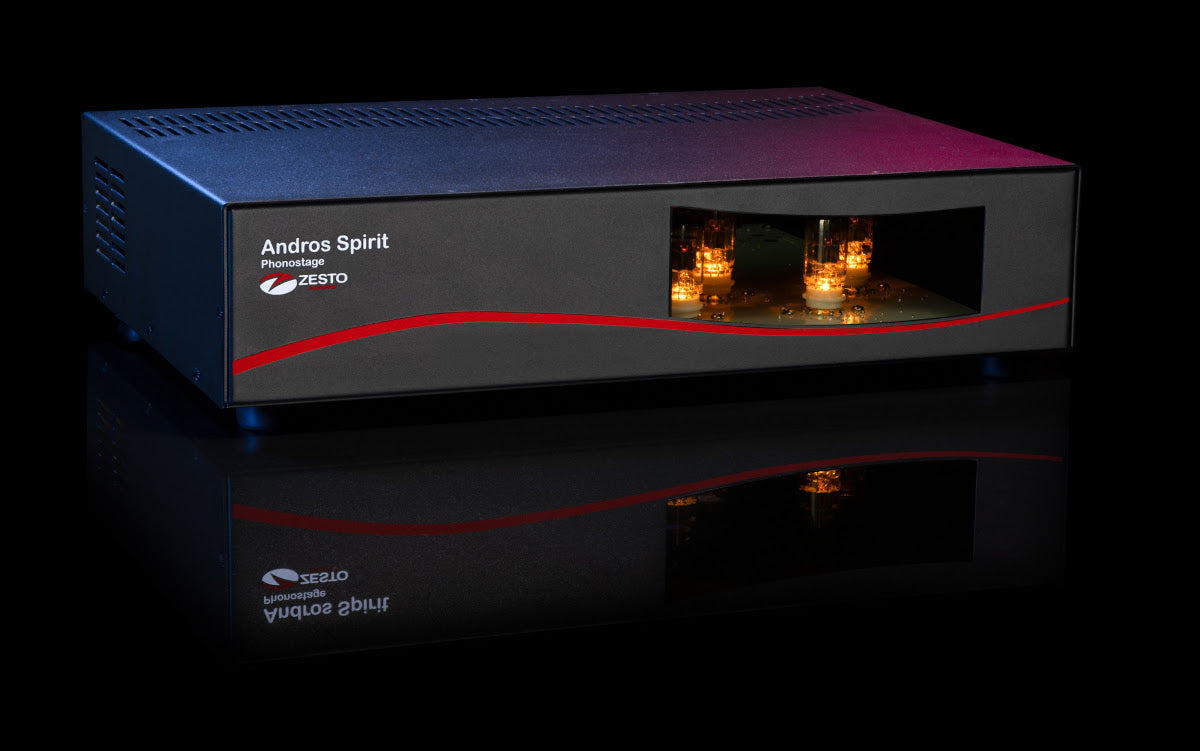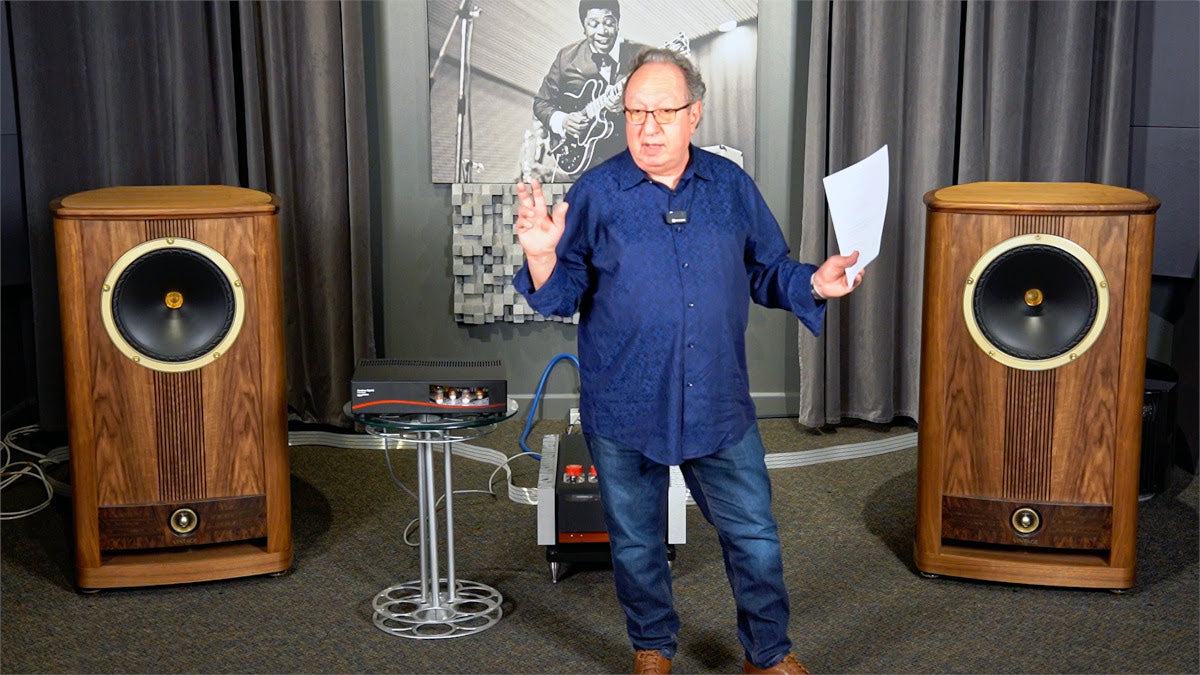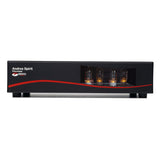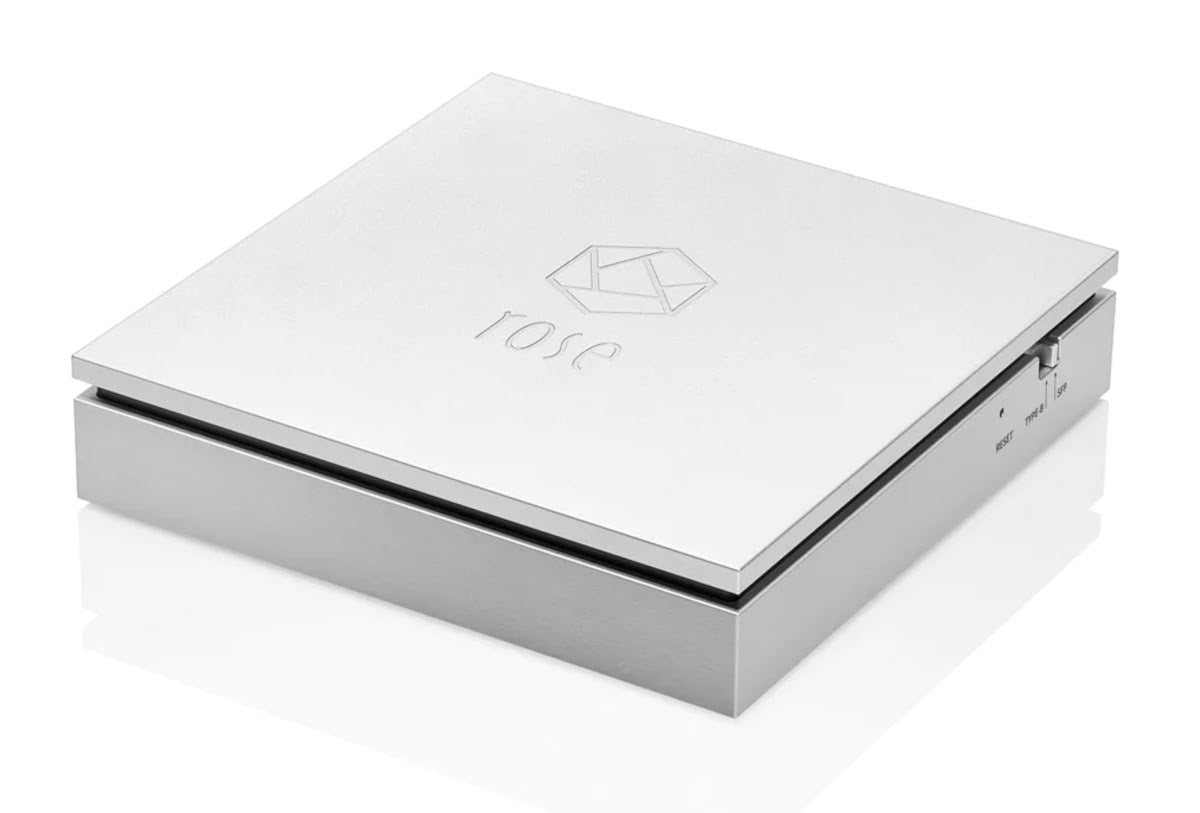Twelve Dreams of George Counnas
Meet Spirit, Zesto Audio's new entry-level phonostage

"This is one of the hardest ones I've done."
George Counnas once worked for Decca Radar and Decca Navigator designing and building systems that endured training and combat duty aboard fighter planes. He was responsible for demonstrating to the government that his products had a consistent and very high MTBF, or mean time between failures. More recently, in his 14 years as the founder and chief design engineer of Zesto Audio, he has designed reference-level phonostages, including the $20,000 Andros Tessera.
So why is the new $3000 Andros Spirit one of the harder challenges of his career?
Budget Unfriendly Design
It turns out that staying true to your audio sound signature while also working to an entry-level budget is a rigorous exercise. The Spirit, at the $3,000 mark in the 'moving magnet only' variant, is still an all-tube design, with nary a solid-state component in the signal path. Yes, George was working on a more affordable design, but to come in under the budget by throwing in op-amps is not the Zesto way.
It could have gone that way: George is of the "hybrid" generation of engineers. At engineering college, half his hours were on tube circuits, and half on solid state. We are glad that the "old fashioned" half of his course captivated his ears and imagination, giving us a brand built around a real love of tubes.
And so, the entry-level Spirit is 100% tube magic, using four 12AX7's. It comes with Zesto's ESP power supply, so called because it anticipates the power needs of the music, giving the circuit breathing room during dense passages and sudden changes. Like other Zesto products, the Spirit is handmade about 70 miles due west of us in Thousand Oaks, CA. George does all the circuit and engineering design, and his wife Carolyn, with a background in fine arts, does the product design.

George Counnas, founder and chief design engineer, Zesto Audio, conducts a training session in our main demo room. To his right is the new Zesto Andros Spirit phonostage.
"Lively, Not Live"
George was a guitar player, but by his own admission, he decided he couldn't make it as one. So he crossed over to the other side of the glass and became an audio engineer. "I've recorded most of the instruments out there, from bagpipes to piccolos to bass bassoons to Marshall stacks, you name it," says George. "That helps me in circuit design because I know how the instruments sound."
And yet, why does George go for a sound that he calls "lively, not live"? Because he is a realist. So many component and system designers claim to be chasing the sound of "live instruments", but no recording equipment on earth can preserve the complete dynamic range of real-life instruments. And even if they did, you probably wouldn't want them to.
As George puts it, "An actual trumpet in your living room would peel paint."
The best we can do is create a reproduction that has color and life in the right places. "Lively, not live."
Phonostages are Hard
Phonostages are the heart of Zesto's product offerings, and they are the hardest to design, says George. "They are very high gain, you have a lot of problems with hum, and then you have the RIAA curve."
George is referring to the low-frequency cut and high-frequency boost that's used to allow bass information to physically fit onto an LP, and upper end detail to make enough of a mark for the stylus to read. As if dealing with the tiny cartridge signal wasn't hard enough, every phonostage has to invert the RIAA recording curve by greatly boosting bass and cutting the highs. When you're dealing with a moving coil cartridge, this process is even more fraught since the level of amplification is so high.
As a result, George approaches moving coil cartridges a little differently. All of his MC phonostages use a built-in step-up transformer. "You get the best transfer of signal, I believe, from a moving coil cartridge if there is a transformer."
To explain, George likens an MC cartridge to a shock absorber on a car: it needs to have some loading on it to work properly. The load of a step-up creates the right draw on the coil, allowing it to control the cantilever. If there isn't enough of a load it will track wildly, and if there is too much it will dampen down.
This is why the Spirit comes in a $2,9997 MM-only version, allowing the moving magnet crowd to save $1,000. If you get one and later want to move to a moving coil, the MM-only version can be upgraded. The MM/MC version can be bought for $3,997.
The Spirit is a brand-new product and is still on its way to us. Even if in stock though, don't buy without talking to our analog experts to see if this is the right match for you and your system. And yes, we have been dropping references to the classic psychedelic LA band Spirit. Meet us on Instagram (@upscaleaudiosocal) and tell us your favorite Spirit tracks!
 |
|
Zesto Audio Andros Spirit Phonostage $2,997.00 |
Seeing the Light: The HiFi Rose Optical Hub

HiFi Rose RSA720 Optical USB Hub
What's an "optical hub" and why would you need one?
More and more streamers are offering optical connections for audio data streams. This isolates the devices from noise and RFI that is carried on the copper wire in Ethernet or USB cables.
For example, some Lumin streamers and streaming DACs offer an optical Ethernet connection in addition to the regular RJ45 slot. If your network switch or router also has an optical connection, you can use fiber-optic cabling to isolate your audio system from the noise-generating mini-city that is your home network.
HiFi Rose's streamer, the RS130, offers optical Ethernet and optical USB, and this is the product we'll use for all examples here. Though it can be used in many systems, the RSA720 hub was designed as a companion to the RS130.
Small Form Factor Pluggable
When you hear "optical" you might think TOSLINK, but that is a connector used only for the S/PDIF protocol, which is the timed digital music signal between a streamer and DAC. (S/PDIF is also carried by coax digital cables, and by XLR digital cables in its balanced avatar called AES/EBU.)
When we talk about "optical" in the context of the RSA720 hub though, we are talking about the audio data stream, which is packet-based and travels over Ethernet or USB. Connections for this are made using SFP which stands for small form factor pluggable. It is a little module that slides into the SFP "cage" on the RSA720 hub, and again on the RS130 streamer.
Why a little module? Because you can easily upgrade it as the protocol changes. Or use other modules depending on your needs, and as they become available.
The RSA720 comes with two SFP optical modules and the matching cable, allowing you to make the optical connection from it to the RS130 streamer (or any other product with an SFP cage.)

If the goal is to isolate from the noise carried over copper wires, why not use Wi-Fi? Because Wi-Fi is gigahertz reception and transmission, and is itself the source of so much of the RFI you are seeking to eliminate.
Optical Use Cases
You have a thumb drive or a USB hard disk or even a laptop with test tracks or high-res downloads. You could connect it straight into the USB port on the back of your streamer, but USB is a notoriously noisy protocol. Instead, connect it to the RS720 hub, which reads the USB data and sends it into your streamer over an optical connection.
These days, there's a big silver disc revival, and more and more companies are putting out dedicated CD players and CD transports. An increasing number of these have USB outputs, allowing you to connect it to the RSA720 hub, and sending your streamer a signal that is clean and, well, light.
 |
 |
|
HiFi Rose RSA720 Optical USB Hub $395.00 |
HiFi Rose RS130 Network Transport $5,195.00 |
